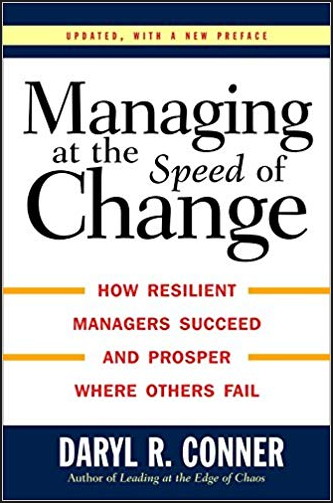Pundits tell us we are in the “new normal”. Not a new normal but the new normal. And they write in tones that suggest the amount of change that is on us in 2019 is unprecedented in human history. This article will explore this premise for ideas that hopefully can help with the context for making competitive strategy for for-profit firms and the growth of the market value of those firms in today’s times in 2019.
Here is a partial list of what pundits say is upon us: lightning fast speed of change, transitory competitive advantages – more permanent protected strategic positions are not possible, the Age of Agile and the death of top-down, command and control bureaucracies, artificial Intelligence (AI), big data analytics, continued automation and robotics, continued miniaturization, digitalization, social media, fickle customers with constantly changing priorities, continued globalization, commerce in outer space and climate change. What would you add?

On a lesser scale some American industries are going through what to them must seem like sort of a new normal: consumer packaged food companies (think Kraft-Heinz) are consolidating via mergers due to lackluster old products (Jello, Macaroni and Cheese, Velveta, Maxwell-House, etc.), China is poised to be the biggest player in electric vehicles by 2025 due to government subsidization, the oil and gas industry is under renewed attacks from backers of the Green New Deal, etc.
What is the response suggested by the pundits above given these sea changes to this new normal? Design thinking and agile management of the total enterprise leading to suggested changes in approaches to leadership are offered. I like these approaches a lot, regardless of any new normal. I would add it would have to be assumed in these writings that the continued importance of good change management is a key. Also while we will discuss below that some pundits are saying strategic planning is dead, I think it is assumed that some form of good strategic planning is useful in this “new” new normal.
So is this the new “new normal” special and unprecedented in human history? Maybe, but I wonder. How many other past periods in human history have we had where a “sea change” has been described as the “new normal” (they did not use this phrase of course) and is expected to disrupt nearly everything? The list is long. I am not a historian, but the periods of ancient Greece and Rome to the Renaissance to the Industrial Revolution command our inspection. Let’s focus for a bit on just the Industrial Revolution. Studying my trusty Wikipedia, I learned this period started in Great Britain from about 1760 to sometime between 1820 and 1840. To quote the Wikipedia writer, “This transition included going from hand production methods to machines, (and I, your current author, would add a shift from an agrarian, rural life to life in the growing cities), new chemical manufacturing and iron production processes, a boom in textile manufacturing, the increased use of steam power, the development of machine tools, and the rise of the factory system”. Good roads and railroads later aided the logistics for the products produced from this “sea change”. To further quote, “Some economists say that the major impact of the Industrial Revolution was that the standard of living for the general population began to increase consistently for the first time in history.” I am almost positive that inhabitants during this period viewed this sea-change with either fear or excitement if one was an entrepreneur.
Why is our current new-normal any different and any more special than in prior periods of sea-change in human history? As I will discuss below, in my view this new-normal is different only if the barriers generated are intractable and not solvable. By the way, enough of the hyperbole with using “new” too much.

As I mention above, I like very much like the current emphasis on design thinking and agile management of the total enterprise. But also enter good strategic planning and good change management, as I also mention above. I think these old tools are always useful if done well. Good strategic planning is supposed to stay ahead of any current “unstoppable trends” and see early through “feint signals” any new emerging unstoppable trends. Good change management is supposed to prepare people for key changes to help them become resilient to those changes. So what is the big deal? That sometimes strategic planning and change management fail us is not the point. We are smart and foresightful people correct? So we should be able to handle any changes extremely well most of the time. After all, our ancestors did a pretty good job of handling all prior periods of sea-change. Now I realize there were negative aspects in just the Industrial Revolution. Sweat-shops, dirty and unlit factories, and child labor issues are just some of what economist call the “externalities” of that time period. So why are we deficient now, as is the undertone in some of the current writings?
While money does not make for a totally happy life, many today in 2019 are becoming millionaires and even billionaires in this current new-normal. I will leave alone in this article the current plea for taxing the heck out of the rich. The point remains that at least some people are handling our current new-normal very well.
In my view and at an appropriate level of generalization, good strategic planning and change management can subsume a for-profit firm’s response to the issues in this current new-normal. As some pundits are declaring that strategic planning is dead, they then go on to espouse their nuanced version of “good” strategic planning. Of all of the myriad tools and frameworks found in strategic planning, I think just handling current “unstoppable trends” and staying ahead of them is a key skill. Also is noticing early new emerging unstoppable trends, and forging various scenarios early to deal with them. In my view just these skills get any for-profit down the road to a useful strategic and operating response to those trends. And change management, first popularized by Daryl Conner in a great 1993 (2006 updated edition) book titled Managing At The Speed of Change, gave us the first set of practical tools to aid grown adults in more easily becoming resilient to changes that upset the status quo.

So again, what is the big deal? My answer is mentioned above. In a previous article, I have discussed the four kinds of barriers found in any for-profit firm. If this new-normal produces intractable and unsolvable barriers, we are in a new-normal. As a quick review, I listed these barriers in the order of the difficulty to identify and remove from easier to more difficult: subject matter, process, structure and culture barriers. As I wrote, a well-managed firm will only have to identify and remove subject matter barriers. Any firm that is innovating and growing will have new stuff to learn and these almost always lead to short term subject matter barriers. Well-managed firms’ management and operating processes will have identified and removed process, structure and culture barriers, as difficult as these can be.
A subject matter barrier is any concrete thing a firm needs to know but doesn’t know that will prevent the timely introduction and launch of new products and services.
Let me give an example of a simple enough product – a ceramic coffee mug. Say we wanted to manufacture these ceramic coffee mugs and we did not know how to produce these at scale with certain customer requirements. These requirements could include learning about the chemistry and physics of clay. In addition, the mug would have to prevent scalding the lips of a coffee drinker but keep the coffee hot for an acceptable period of time. Also, they would have to able to be produced in runs of 10,000 units and be stacked in shipping containers without breaking. If we did not know how to do this, this would be a subject matter barrier. Response? Put a cross-functional team on this to learn how to do it. The team would be given a study budget and would probably enlist outside resources to help. Dealing with subject matter issues can be very thorny. An example would be hybrid car and locomotive engine batteries, which took a long time to solve. But subject matter barriers are usually the easiest of the four kinds of barriers to identify and remove.

If our current period of time produces intractable and unsolvable subject matter barriers and in the process causes myriad other process, structure and culture barriers, we have a true new-normal. If not, we are just in a recurring period of time of newness that our current tools, aided by perhaps design thinking and agile management, can solve with smarts and determination. My take is we are not in a new-normal yet. But I will wager with you that in ten years we will have a new set of unstoppable trends and issues that might qualify as a true new-normal. I will pay up in ten years if I am wrong. Perhaps with a cup of coffee in one of those ceramic mugs we could produce.
What is your opinion?
This article is part of a series on what causes a firm’s value to increase.
Dr. William Bigler is the founder and CEO of Bill Bigler Associates. He is a former Associate Professor of Strategy and the former MBA Program Director at Louisiana State University at Shreveport. He was the President of the Board of the Association for Strategic Planning in 2012 and served on the Board of Advisors for Nitro Security Inc. from 2003-2005. He is the author of the 2004 book “The New Science of Strategy Execution: How Established Firms Become Fast, Sleek Wealth Creators”. He has worked in the strategy departments of PricewaterhouseCoopers, the Hay Group, Ernst & Young and the Thomas Group. He can be reached at bill@billbigler.com or www.billbigler.com.
